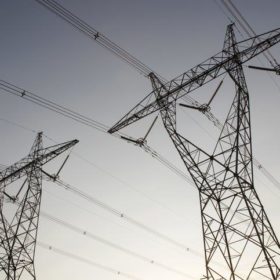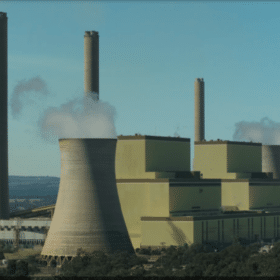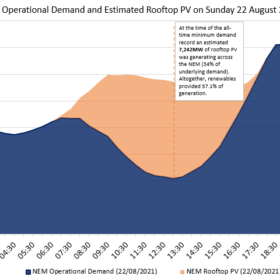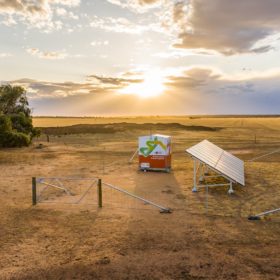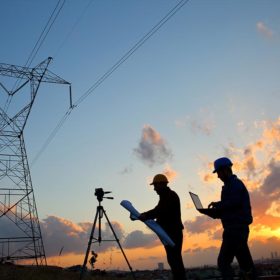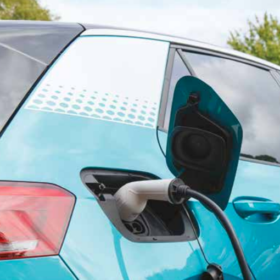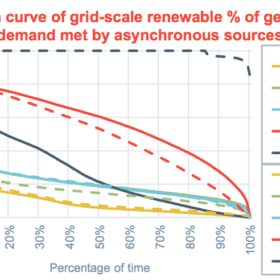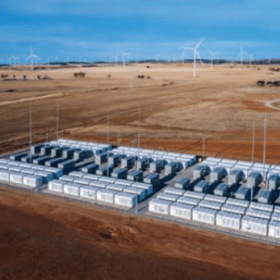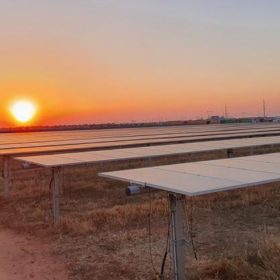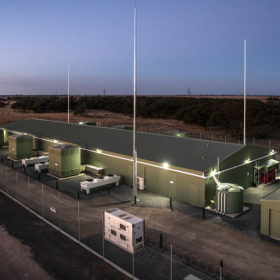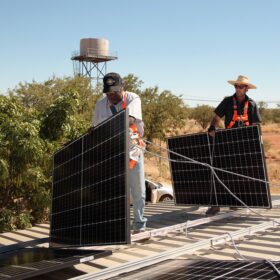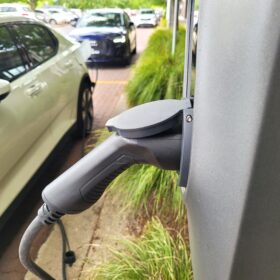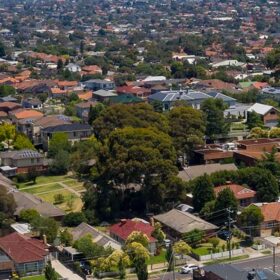Solar industry pioneer pushes for National Transmission Network
A parliamentary inquiry has been told Australia’s ageing transmission network “urgently” needs upgrading to deliver new solar PV and wind power to cities as the nation’s transition to renewable energy generation continues to accelerate.
Secrecy and high level splits: ‘coal-keeper’ uproar but expert says politics won’t stop the inevitable
The Energy Security Board’s market reforms have come under fresh scrutiny after ministers met last week under a veil of secrecy, apparently stirring deep rifts between federal and state ministers and other stakeholders. While it remains unclear what the Board’s proposed capacity market, dubbed by some as ‘coal-keeper’, might look like, Dan Cass, who leads energy policy at the Australia Institute, told pv magazine Australia as long as Angus Taylor isn’t steering, he’s optimistic that state governments and the ESB could work towards a reasonable outcome.
Solar eclipses coal for first time, setting renewable record
For the first time in the history of our national energy market, solar generated more electricity than coal, providing 41.4% of the national market on Sunday, while coal accounted for 41.2%.
Saturday read: Scaling up standalone power systems
As technology redefines the delivery of network services, grid operators in remote areas the world over are searching for more cost-effective and reliable alternatives to traditional poles and wires. Standalone power systems are the solar application that is at the forefront of the switch, and they’re ramping up fast.
AEMO looks to cloud to help solve connection issues
The Australian Energy Market Operator will later this month commence testing of a cloud-based simulator designed to accelerate the grid connection process for developers of energy projects including large-scale wind and solar.
WA to install the country’s longest electric highway
Western Australia will install electric vehicle (EV) stations at 45 new locations, creating a fast charging network spanning more than 3,000kms.
AEMO’s 2025 goal means that SA becomes the proving grounds
The latest news in the NEM is AEMO’s goal to be capable of handling periods of 100% instantaneous renewables penetration by 2025. This is a significant challenge and fitting given the pace the NEM is moving to
supporting increasingly higher levels of instantaneous (and increasingly asynchronous) renewables on a regular basis.
Sunday read: What’s in store for storage
As solar and wind make up larger portions of the energy mix, energy storage is becoming an increasingly important piece of the puzzle in keeping electricity networks running smoothly. And as battery costs fall, new business models are emerging to increase the value of battery energy storage projects for both grid operators and project owners. Focusing on two leading countries – the United Kingdom and Australia – pv magazine looks at what’s in store for large-scale energy storage.
Australia’s biggest solar farm opts for AI-powered bidding platform
The operators of Australia’s largest solar farm have turned to a software-based bidding solution as they seek to optimise dispatch and manage the facility’s market trading and power purchase commitments amid increasingly market volatility.
Why AGL’s new grid-forming battery is ‘genuinely cutting edge’
Australian giant AGL Energy plans to build what will be the world’s largest ‘grid-forming’ battery in South Australia, deploying technology so novel that it yet to be clearly regulated in Australia. “Trialling something like this on the grid at this scale hasn’t been done before anywhere in the world,” Josh Birmingham, Director of Large-Scale & Project Solutions at SMA Australia, told pv magazine Australia.
